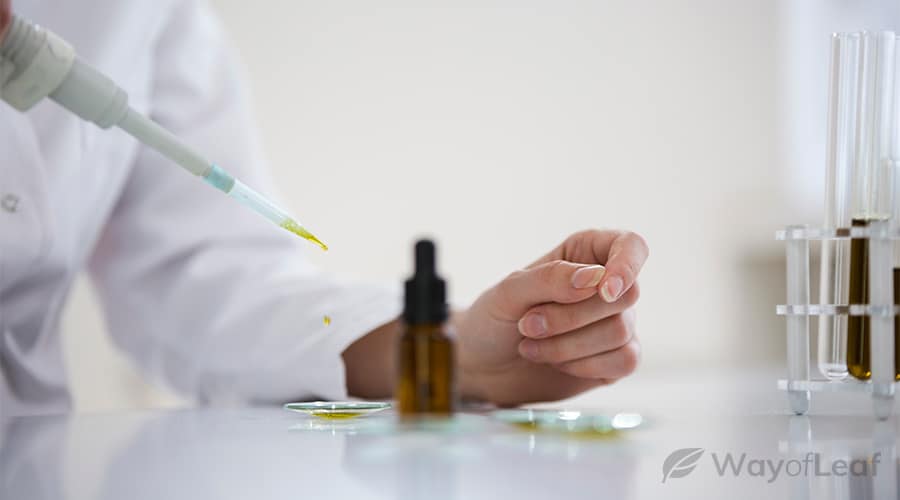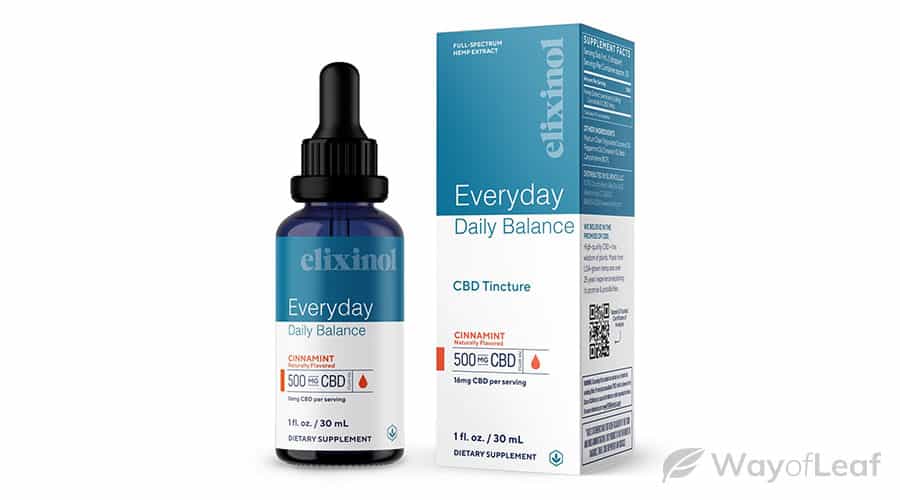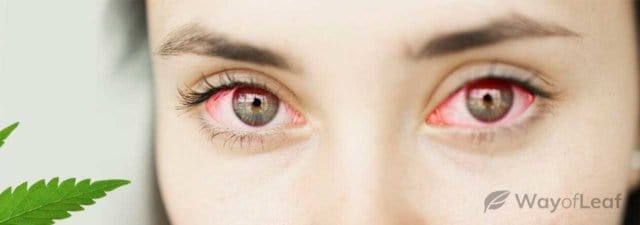Most CBD products, including CBD tinctures and CBD vape liquids, come with third-party lab reports. But what are these, and how do you read them?
Before we get into that, let’s talk about the importance of third-party lab reports. The present-day cannabis industry is largely unregulated. This means that (aside from Epidiolex), CBD products are not evaluated by the FDA. In other words, very little oversight goes into the labeling of various hemp and CBD products.
This presents quite the conundrum for the patient or customer who simply wants to find a good, safe, effective product that will help them find relief from their specific condition.
A third-party CBD lab report provides unbiased verification of what’s actually in the product you’re buying.
Not all products are made the same…
There have been CBD companies in the past that have gotten warning letters from the federal government. These companies were advertising “CBD” products that contained practically nothing but coconut oil. This prompted consumers and manufacturers alike to demand heightened transparency. This is where third-party labs for CBD oil come in.
Third-party simply means that the laboratories are separate entities from the company selling the CBD. In other words, they have no affiliation with the brand they’re testing. They also shouldn’t have any affiliation with an organization that mandates specific results.
Third-party labs run CBD oil through a chromatograph. This advanced machine determines what compounds are in the product, and at what amount (we’ll discuss this in more detail below). It also allows us to see the percent accuracy that matches up with a manufacturer’s claims. In addition, labs also test for other full-spectrum (we’ll talk more about what that means later) compounds like terpenes and flavonoids.
In this article, we show you step-by-step how to read CBD third-party lab reports, and how to interpret them. Once you get the hang of it and learn the primary compounds, it’s actually pretty straightforward. [And as a side note, we’ll be using examples from reports issued for two of the biggest CBD oil manufacturers in the industry: Elixinol and Charlotte’s Web.]
What Is Independent Third-Party Testing?
Third-party testing refers to the testing of a CBD brand’s products by an independent, i.e., an unaffiliated laboratory.
After the manufacturing process is complete, most CBD companies send samples from each batch to testing companies for analysis. The testing companies then test these products in third-party labs and afterward produce a report outlining the test results.

The purpose of independent third-party testing is:
- To show consumers that the product has not only been tested in-house but also by an independent testing company.
- To provide evidence that the product is safe and free from harmful contaminants.
- To show what each product contains in terms of its cannabinoid and terpene profile.
Next, we’ll discuss how independent third-party labs go about testing CBD oil and other CBD products.
How to Test CBD Oil
Leading CBD companies know that third-party test results are a must for consumer confidence in an unregulated market. Displaying independent third-party certification (Certificates of Analysis), i.e., the lab reports, on their websites, allows the consumer to see precisely what percentage of CBD and other cannabinoids are in a particular product.
Third-party test results are a must for consumer confidence in an unregulated market.
Testing to ensure that the product does not contain harmful substances, such as heavy metals, pesticides, or residual solvents, is critical for demonstrating product safety.
Earlier, we mentioned that testing companies use specialized equipment, such as a chromatograph, to test CBD products. In this section, we’ll delve a bit deeper into the most common practices utilized by third-party labs to learn more about how to test CBD oil.
High-Performance Liquid Chromatography
Many third-party labs use High-Performance Liquid Chromatography (HPLC) to test for cannabinoid concentrations.
With HPLC, the sample is dissolved in a solvent (most commonly ethanol) before being put into a long, thin tube. The pressure is increased until the compounds separate according to their weight – the heavier molecules sink while the lighter compounds float.
The heavier compounds exit through a hole in the tube, and a UV light detector measures the density of the compounds by their ability to absorb UV light. The densities of the compounds leaving the tube are compared to the known densities of different cannabinoids, thereby enabling the lab technicians to determine the concentrations of cannabinoids in the sample.
PCR Testing (Polymerase Chain Reactions)
Undoubtedly due to the ongoing COVID-19 pandemic, the majority of readers will at least have heard about PCR testing. But did you know that testing companies also use PCR Testing to test CBD samples for biological contamination?
When testing CBD products, the lab technician uses PCR testing to analyze DNA strands and then compares them to known DNA patterns of bacteria, fungi, and protozoal bacteria to determine whether they are present.
Mass Spectrometry Testing
Mass spectrometry (MS) testing is primarily used to identify the presence of heavy metal contaminants (e.g., lead, arsenic, etc.). However, it can also identify cannabinoid profiles in a given sample.
During MS testing, the sample is ionized before it is passed through electromagnetic fields. The individual components separate and are plotted on a graph. The lab technician can identify which compounds are present in the sample by comparing where each compound falls on the graph with the known masses of relevant compounds.
First Things First: What Compounds to Look for in a CBD Third Party Lab Report
Before we look at the actual reports, let’s go over some of the main compounds that a lab report might feature for a full-spectrum CBD oil.
CBD
Obviously, the main chemical compound that you want to look for in the third part lab report is CBD (which is sometimes listed by its scientific name cannabidiol).
Other Cannabinoids
CBD itself is a cannabinoid, but it’s far from the only one present in the cannabis or hemp plant.
Other cannabinoids to look for in third-party lab reports are CBC, THC, THCA, CBG, CBDA, and CBN. (Of note, if you’re looking for a CBD oil that doesn’t produce a high, you’ll want to make sure it has zero THC.
Also, be advised that many reports won’t list the full cannabinoid profile. So if you don’t see CBC, THCA, CBG, CBDA, or CBN listed on the report, it doesn’t necessarily mean it’s a bad CBD oil. It just means the other cannabinoids didn’t show up on the chromatograph).
Pesticides, Herbicides, Growth Hormones, and Fertilizers
In case you need any clarification, you do NOT want to see any pesticides, herbicides, growth hormones, or fertilizers show up in the third-party lab report. The best CBD oils will be 100% free of any of these potentially harmful byproducts.
Microbes
The term “microbe” in itself is very vague, as there are millions of different species of microbial organisms out there, both good and bad. In general, though, you don’t want any living organisms present in your CBD oil. So if microbes show up in the third-party lab report, your best bet is to steer clear.
Chemical Solvents
This is a major one to keep an eye out for. If the lab report lists ANY form of glycols – especially polyethylene glycol (PEG) or propylene glycol (PG), stay far, far away. These are chemical solvents that can break down into carcinogenic (cancer-causing) aldehydes such as formaldehyde and acetaldehyde.
So without further ado, let’s take a look at some actual third-party lab reports from some of the biggest names in the CBD oil game in order to get better acquainted with what they actually look like.
CBD Third Party Lab Report: Elixinol
Elixinol has arguably the highest level of transparency of any CBD oil manufacturer currently on the market. If you check out their certificate of analysis page, you’ll see that they offer up-to-date reports for each of their 17 oral-based CBD products. Here is the current certificate from one of their most popular tinctures, the 100 mg Cinnamint CBD oil drops (report generated by Gabriel Ettenson, COO):

Verified ingredients: (these were the actual base ingredients tested to be present in the sample tincture) – MCT oil (from coconut oil); hemp seed oil; CO2 cinnamon extract (for flavoring); peppermint essential oil.
Active cannabinoid profile: (this is the most important one for determining the actual presence/potency of CBD) – 100 mg CBD (with an allowable variation of +/- 10%); 0% THC (so in other words, the sample product tested exactly as it was labeled). No other cannabinoids were listed on the report.
Heavy metal content: No, we are not talking about bands like Metallica or Slipknot here. Heavy metal content refers to the presence of certain metal elements that are known to be toxic or cause hazards to human health. The 100 mg Elixinol sample tested for:
- Arsenic (As) 0.01 ppm (*acceptable limit 1.5 ppm)
- Cadmium (Cd) < 0.01 ppm (*acceptable limit 25 ppm)
- Mercury (Hg) < 0.01 ppm (*acceptable limit 15 ppm)
- Lead (Pb) 0.06 ppm (*acceptable limit 5 ppm)
What Does ‘Acceptable Limit’ Mean?
To be clear, the “acceptable limit” indicates the amount that is acceptable per unit of volume – as you can see, the actual volumes in this sample were nearly 100x less than the official acceptable limit.
Microbiology results: 3M Petrifilm from the sample Elixinol CBD oil show that it tested negative for E. coli and Salmonella, and tested at less than 10 cfu/g for the total Coliform count – easily within the mandated “acceptable values.”
Pesticides and herbicides (tested using HPLC mass spectrometry): The Elixinol sample was 100% clear of 24 common pesticides, including Abamectin, Spinosad, Imazalil, and Carbaryl. (If a lab report finds pesticides or herbicides in an oil you’re considering purchasing, we would recommend making sure that it’s under the federally mandated limits. You can find this by checking regulatory information on the Environmental Protection Agency’s website database).
[You can view the complete Elixinol CBD third-party lab report here].
CBD Third Party Lab Report: CW
charlottesweb.com (which is made by the famous Stanley Brothers) is probably the most popular and reputable CBD product on the market. Here is the most recent CW lab report (conducted by Botanacor Services) for a batch of the 100 mL “Everyday Advanced 5000” oil:
| Parameter | Result |
|---|---|
| THC | 2.0 mg/mL |
| THC-A | 0.0 mg/mL |
| CBD | 53.7 mg/mL |
| CBD-A | 0.0 mg/mL |
| Total Aerobic Plate Count (microbe count) | Pass |
| Total Yeasts and Molds | Pass |
| Total Coliforms | Pass |
| Salmonella | Pass |
| E. coli | Pass |
| Aflatoxins | Pass |
| Residual solvents (including PEG and PG) | Pass |
| Inorganic Arsenic | Pass |
| Heavy Metal Content (Pb, Hg, Cd) | Pass |
| Pesticides | Pass |
If Third-Party Testing isn’t Mandatory, Why Do Companies Do It?
As mentioned, market-leading CBD companies know that consumers have concerns about purchasing CBD products in an unregulated market. Therefore, large CBD brands like Premium Jane have their products tested by independent testing companies to help ease those concerns for their customers.
Earlier, we outlined some of the main reasons CBD companies pay for independent third-party testing, such as demonstrating product safety. What these companies are basically saying to consumers by providing third-party test results is, “you don’t have to just take our word for what’s in these products; here’s unbiased proof.”
CBD companies that have their products third-party tested provide links on the product page of their website.
The CBD companies that have their products tested by third-party labs provide links to the actual lab report on the product page of their website. Consumers can click on the lab report link, and they can see what the product contains, and just as importantly, does NOT contain.
It is also important to point out that apart from not being mandatory, independent third-party testing is not cheap for these companies. However, by having their CBD products tested by third-party labs and having the test results accessible on their website, the owners of these companies know that the consumer is more likely to purchase from them as a result.
Final Thoughts on How to Read CBD Third Party Lab Reports
When it all comes down to it, CBD oil lab results are pretty straightforward and simple to read as long as you know the compounds that you should be looking for, and the ones you should expect to find in the raw material.
In addition to the CBD, for example, you may expect to find other cannabinoids like CBN, CNC, CBG, and THCA on your list. Of course, if you’re looking to avoid a high, you’ll want to make sure that the sample doesn’t contain any THC – especially if you have an impending drug test that you’re worried about passing.
Also, you’ll want to use the CBD lab results to verify that the sample is free of any pesticides or herbicides, that it falls within the acceptable limit of heavy metal and microbe content, and to verify the carrier oil (typically olive, coconut, or MCT oil which is a natural derivative of coconut oil).
![How to Prevent Developing a Cannabis Tolerance [Must-Know Trick]](https://wayofleaf.com/wp-content/uploads/2018/01/wol_reduce-marijuana-tolerance_1920x450-640x225.jpg)


![Which Country Smokes the Most Marijuana? [Revealed]](https://wayofleaf.com/wp-content/uploads/2020/06/wol_which_country_smokes_the_most_marijuana_1920x450-640x225.jpg)

![How Much Does Weed Cost in the UK? [Update for 2023]](https://wayofleaf.com/wp-content/uploads/2019/03/wol_1920x450-11-640x225.jpg)


![How Many Different Types of Cannabis Are There? [Answered]](https://wayofleaf.com/wp-content/uploads/2019/05/mj_different-kinds-of-marijuana-640x225.jpg)

![What Is MCT in CBD Oil? [Comprehend a Label’s Ingredients]](https://wayofleaf.com/wp-content/uploads/2019/04/mj_mct-in-cbd-oil_1920-1-640x225.jpg)

